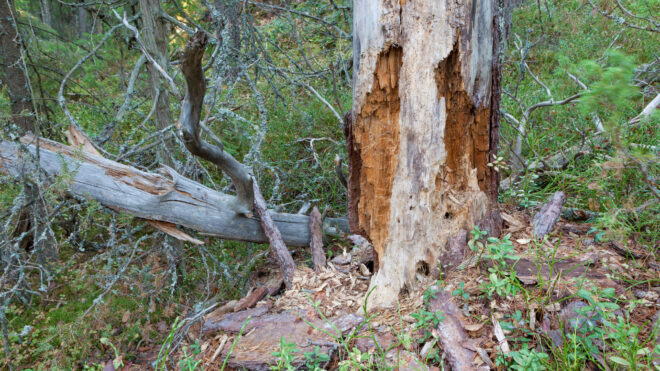What is more beautiful than a picturesque tree on your front lawn? It’s a place for your children to play, a center piece of your yard, and a source of life for everything around it.
But a sickly or dying tree can be a source of disaster. Falling trees have the potential to hit homes, cars, and even people, and cause a great deal of damage.
Know the signs of a dying or dead tree, so that you can get it removed to keep you, your family, and your property safe.
1. Lots of Sticks on the Ground
If your yard starts to be riddled with sticks lying on the ground, there’s a good chance that your tree is either dying or dead.
Healthy trees have branches that are flexible and bend with the wind and other pressures. When there are sticks on the ground, it means that they’re breaking off the branches too easily. They’re likely dried out on the inside because the tree is no longer taking in water.
When they become dry, they become brittle, which means they can’t take normal pressures and fall off onto your lawn.
2. Shedding Bark
When a tree begins to shed its bark, it’s a sign that it isn’t receiving the nutrients that it needs to stay healthy. You may notice it easily breaks away if you touch it, you may see it come off in the wind, or you may notice more bare spots on the trunk where bark should be.
While shedding bark doesn’t necessarily mean that a tree is dead yet, it is a sign that it needs some serious intervention on the part of a professional. They can make the call about whether you need to give the tree more nutrients or if it’s too far gone to help. Sometimes lost bark is a sign of an infection that you won’t want to spread to your other trees.
3. Rot or Fungus Growing
Fungus and the bacteria that cause rot survive off of eating dead things. So if you see rot or fungus growing on your tree, you know that at least that portion of the tree is already dead. It’s a very bad sign.
You’ll need to remove the rotted dead spots and begin treatment on the rest of the tree. Unfortunately, if the infection has already spread to a significant portion of the tree, there isn’t any hope in saving it.
If it’s a propagatable species, find an uninfected portion to propagate from to have a new tree in its place after it comes down. This is similar to being able to save your dead tree if it was a favorite of yours.
4. A Leaning Tree is A Dying Tree
If you notice a tree that was once straight is now leaning over, you may have a dying tree on your hands. It usually means that the roots have been broken or are too weak to anchor your tree into the ground.
You can try giving it a support system, but if the roots truly are damaged, it’s unlikely that your tree can be saved. The only exception to this rule is a tree that’s been growing crooked from the beginning.
But even those trees should be offered tree care in the form of sturdy support, so that they can grow straight again and not put too much strain on the root system.
5. No Foliage
One of the most obvious signs of a dying tree is a lack of foliage. Of course, you won’t notice this during the winter when all of the trees lose their leaves. But as spring comes around and other trees are beginning to replace their leaves, you might notice one of your trees isn’t making the change with the season.
A tree without leaves isn’t performing photosynthesis, so it isn’t living. Even a tree missing leaves from one area is in some kind of obvious distress, and should receive tree maintenance or be cut down.
6. No Green Under the Bark
If you suspect that your tree may be dead, break a small piece off and scratch under the bark. A sign of a healthy, living tree is the presence of green stickiness under the bark. If it lacks that and is instead just tan and brittle, your tree or at least that portion of it is dead.
That green is its nutrient flow. Just like you’d be dead without blood flowing through your veins, a tree is dead with nutrients running under its bark.
7. Signs of Termites or Other Wood Eating Pests
Termites eat 20% of the dead wood found in forests. While they rarely kill trees because they prefer to eat rotted wood, their presence is a sure sign that your tree is in danger. And in the rare occasion that they are destroying a healthy tree, they’re very difficult to get rid of.
Know the signs! You’ll be able to hear them scratching around if you press your ear up to a tree. You also may find very fine sawdust around the base of your tree that the termites have left behind in their burrowing.
What to Do About a Dying Tree
If your tree is dead or dying, you absolutely need to call in a professional tree maintenance service. They’ll be able to advise you on treatment for a saveable tree, and do the dirty work of taking a tree down if it’s unretrievable.
There are lots of mistakes you can make while taking down a tree yourself, so it’s always best to call in the professionals.
Dying Tree? Know the Signs
By knowing these signs of a dying tree, you’ll quickly recognize when a tree is no longer safe to keep in your yard. Take notice of extra sticks on the lawn, sawdust by the base, and a change in the structure of your tree.
Worried about a tree in your yard? Contact us today for a consultation!

